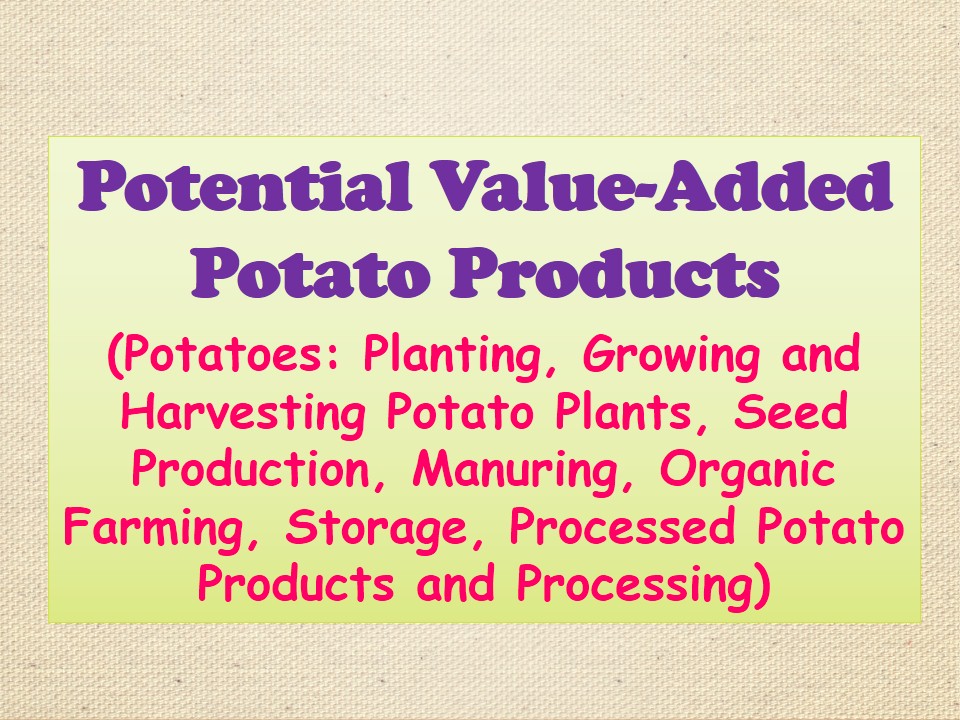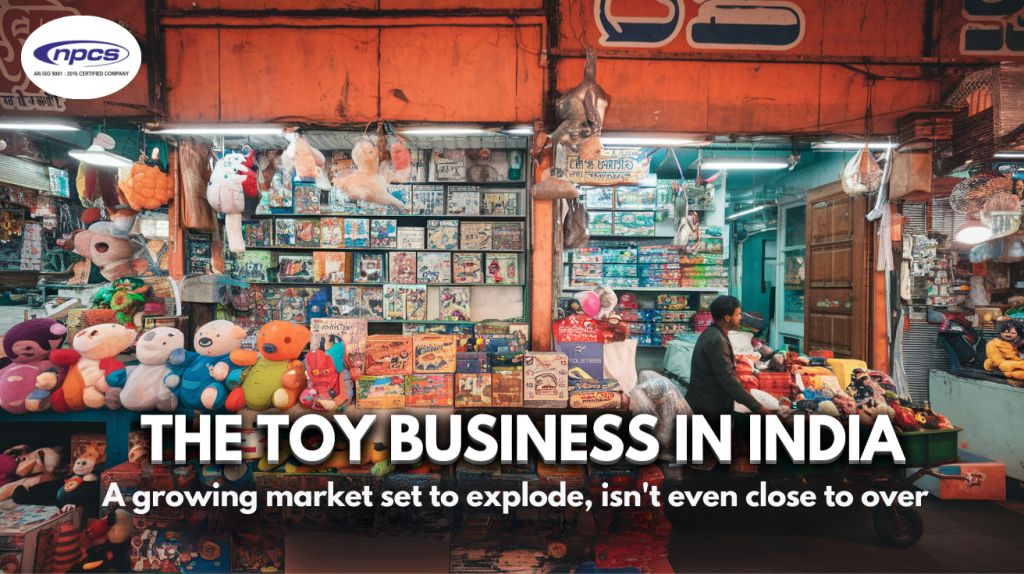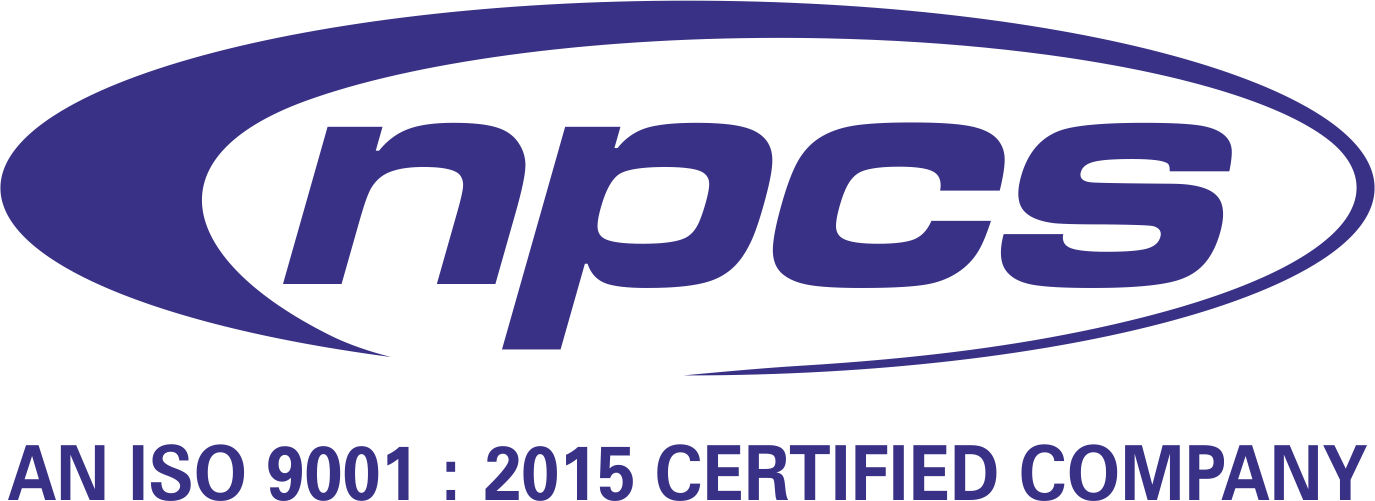
Potato ranks fourth position in the world after wheat, rice and maize as non-cereal food crop. Potato is probably the most popular food item in the Indian diet and India is one of the largest producers of potato. It is used in many ways like vegetable, potato wafers/chips, powder, finger chips etc. Potato tubers constitute a highly nutritious food. It provides carbohydrates, vitamin C, minerals, high quality protein and dietary fiber. Potato is a rich source of starch and it is consumed mainly for its calorific value, also contains phosphorus, calcium, iron and some vitamins. Boiling potatoes increases their protein content and almost doubles their calcium content. It is vastly consumed as a vegetable and is also used in various forms such as starch, flour, alcohol, and dextrin and livestock fodder. It is estimated that about 25 % of the potatoes, which are spoiled due to several reasons, may be saved by processing and preservation of various types of processed products. The potatoes can be processed for preservation and value addition in the form of wafers/ chips, powder, flakes, granules, canned slices. Potato granules are used for the preparation of various recipes, to add to vegetable and non-vegetable recipes and to enhance the quantity as well as to enrich the food value. There is a huge potential for processed potato products such as potato flakes, potato powder, frozen potatoes, frozen French fries, potato chips/wafers are one of the most popular snack items consumed throughout world. International trade in potatoes and potato products still remains thin relative to production, as only around 6 percent of output is traded. High transport costs, including the cost of refrigeration, are major obstacles to a wider international marketplace. The industry is still growing at a rapid pace where French fries are showing the highest growth followed by potato chips and potato powder/flakes. It is by far the largest product category within snacks, with 85% of the total market revenue.
Potato is grown in more than 100 countries, under temperate, subtropical and tropical conditions. It is essentially a “cool weather crop”, with temperature being the main limiting factor on production. The potato is a very accommodating and adaptable plant, and will produce well without ideal soil and growing conditions. Once harvested, potatoes can be used fora variety of purposes: as a fresh vegetable for cooking at home, as raw material for processing into food products, food ingredients, starch and alcohol, as feed foranimals, and as seed tubers for growing the next season’s crop. Around the world, consumer demand isshifting from fresh tubers to processed products and ever greater quantities ofpotatoes are being processed to meet risingdemand for convenience food and snacks.The major drivers behind this trend include expanding urban populations, rising incomes, diversification of diets, and lifestyles that leave less time for preparing the fresh product for consumption.
There are significant opportunities for improved potato production and utilization technologies in this part of the world to address poverty, food security, and environmental degradation. There are millions of households in the region that grow potatoes, each household producing on average about two tons of this commodity on 0.1 to 0.2 hectares of planted area per year. Demand for potatoes is increasing rapidly, and a large share of production is marketed as a vegetable cash crop, with a small but increasing share going for processing. The potato also tends to be an input-intensive crop, often grown in fragile mountain environments. Thus, improved potato productivity is likely to have favourable impacts on the incomes of poor farming families. A share of these benefits will likely be passed on to consumers through the price-lowering effects of increased production. Improved potato production practices that reduce pesticide requirements and soil erosion are likely to have positive health and environmental impacts.
The market for fresh consumption of potatoes is expanding in most of Asia in response to income growth and urbanization. In addition to economic and demographic forces, government policies in several countries in the region are promoting expansion of the potato crop. In China the potato is included in the five-year national development plan aiming at reducing the poverty of the western provinces, and in Democratic People’s Republic of Korea the leader of the country is actively promoting the potato crop to ensure food security in the country’s northern highlands.
This book basically deals with origin, evolution, history and spread of potato, potato products, quality requirements for processing, morphological, size and shape, defects, biochemical, dry matter, reducing sugars, phenols, inheritance, morphological attributes, tuber shape, growth cracks, hollow heart, internal rust spots, greening, biochemical attributes, glycoalkaloids, dry matter, reducing sugars, enzymic browning, development of varieties for processing, areas suitable for growing processing potatoes, processing quality of Indian potato varieties, processed potato products, dehydrated products at village level, potato chips, french fries and flakes commercial production, grading manual for frozen French fried potatoes for frozen French fried potatoes, areas of production, varieties, receiving, determining the quality and condition of raw potatoes for frying purposes, determining the quality and condition of raw potatoes for frying purposes, etc.
The present book covers complete details of potato cultivation and processing in proper manner. This book is an invaluable resource for agriculture universities, students, technocrats and entrepreneurs.
See more
http://www.entrepreneurindia.co/
Tags
Agro Based Small Scale Industries Projects, Agro Techniques for potato production of quality potato seed, Commercial Postharvest Handling of Potatoes, Cultivation of Potato, Favourable Conditions of Growth for Potato, Food Processing Industry in India, Get started in small-scale food manufacturing, How long does it take to grow a potato?, How to Easily Plant and Harvest Potatoes, How to Grow and Store Potatoes, How to Grow Organic Potatoes, How to grow Potato : Vegetable Gardening, how to grow potatoes , How to plant potatoes?, How to start a food manufacturing business, How to Start a Food Production Business, How to Start a Potato Production Business, How to start a successful potato processing business, How to Start Food Processing Industry in India, How to Start Potato Processing Industry in India, How to Store Potatoes, Most Profitable Food Processing Business Ideas, Most Profitable Potato Processing Business Ideas, new small scale ideas in Potato processing industry, organic farming potatoes, Organic Potato Production, planting potatoes from potatoes, post-harvest technology and utilization of potato, Potato and Potato Processing Technology Book, potato by products, potato cultivation in india, potato cultivation pdf, potato cultivation techniques in india, potato farming business plan, potato farming methods, potato farming process, Potato Processing and Uses, Potato Processing Industry in India, potato production in india, Potato Production, Processing and Technology book, Potato Seed Production, Potato Value Added Products, Potatoes: Planting, Growing and Harvesting Potato Plants, Potential value-added products and uses, Process Technology Book for Production of Potato, Setting up and opening your potato processing Business, Starting a Potato Farm – Startup Business, Starting a Potato Processing Business, true potato seed production technology, Use of Manure in Potato Production, Value Added potato processing, Value added products from potato, Value addition to potatoes, Value-Added Food Processing Technologies, Value-added food products processing, Value-added offerings increase in potato category, What are potatoes made out of?, what are seed potato
Contact Form
[contact-form][contact-field label=’Name’ type=’name’ required=’1’/][contact-field label=’Email’ type=’email’ required=’1’/][contact-field label=’Country’ type=’text’ required=’1’/][contact-field label=’Mobile’ type=’text’/][contact-field label=’Website’ type=’url’/][contact-field label=’Comment’ type=’textarea’ required=’1’/][/contact-form]





